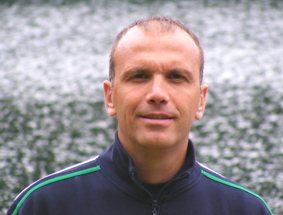Bertolucci Lab
 |
Our group investigates the mechanisms and functions of circadian oscillators that control physiological and behavioral processes. We are interested to understand how circadian oscillators work and what role they play as mediators of rhythmic physiological and behavioural processes. |
Life on Earth is under the influence of basic environmental periodic changes such as day-night and tide cycles or the fluctuation of seasons. These periodic changes are the result of the planet and satellite rotation and their orbit around the Sun. Organisms have adapted to these rhythms in order to maximize the benefits they can derive from the limited natural resources. The mechanism that keeps track of time, and therefore allows the organism to anticipate daily changes is termed circadian clock. Circadian clocks are molecular time-keeping mechanisms that reside in a wide range of cell types in a variety of organisms. The primary role of these cell-autonomous clocks is to mai ntain their own 24-hour molecular rhythm and to drive the rhythmic expression of genes involved in physiology, metabolism and behavior. The key feature of a circadian clock is its ability to synchronize (entrain) to environmental time cues (Zeitgebers or "time-givers") and to maintain rhythmic function when placed in constant conditions. The best known examples of circadian oscillators include the retina the pineal gland of reptiles and birds and the mammalian suprachiasmatic nuclei (SCN) of hypothalamus. It had long been thought that the circadian clock was the function of a limited number of specialized pacemaker structures. These "central pacemakers" such as the SCN , retina and in lower vertebrates, the pineal gland were considered to be responsible for generating all circadian rhythms within the organism. However, evidence accumulated over the past few years using the wealth of tools now available to m onitor clock function at the molecular level, suggests the existence of autonomous peripheral clocks in most cells and tissues. It appears that the vertebrate circadian timing system is composed of a set of independent pacemakers in addition to central pacemakers such as that located in the SCN. The function and regulation of these peripheral pacemakers has now become an important additional subject of investigation.

